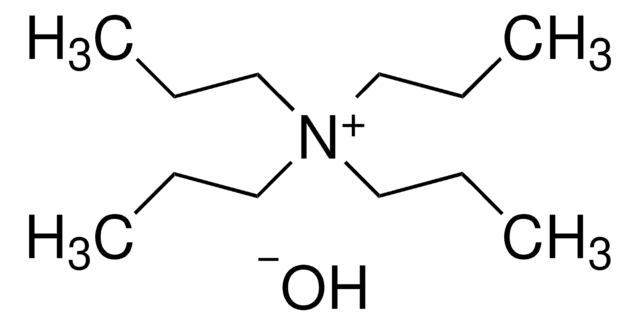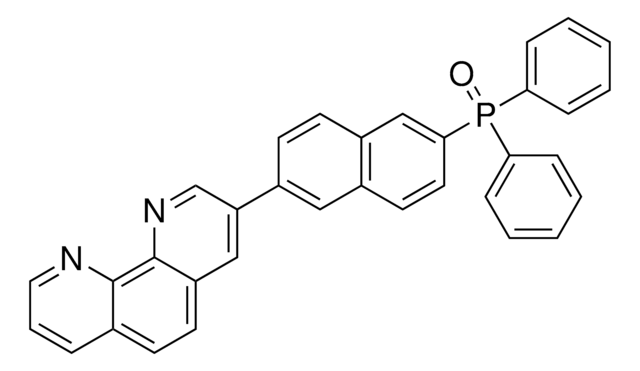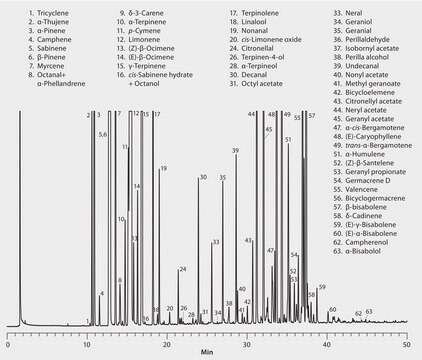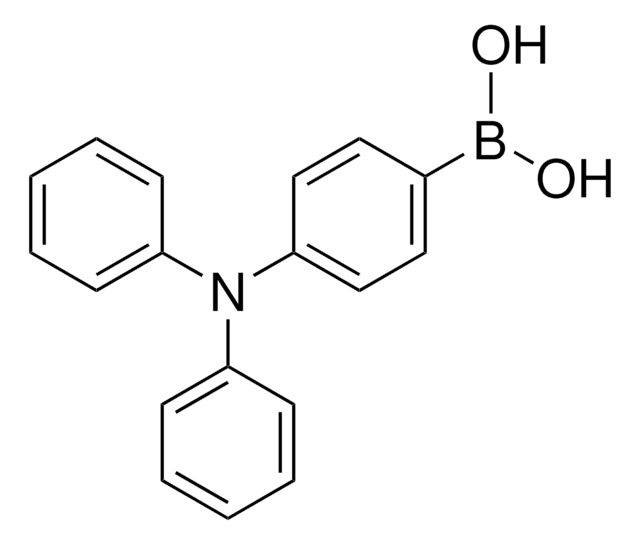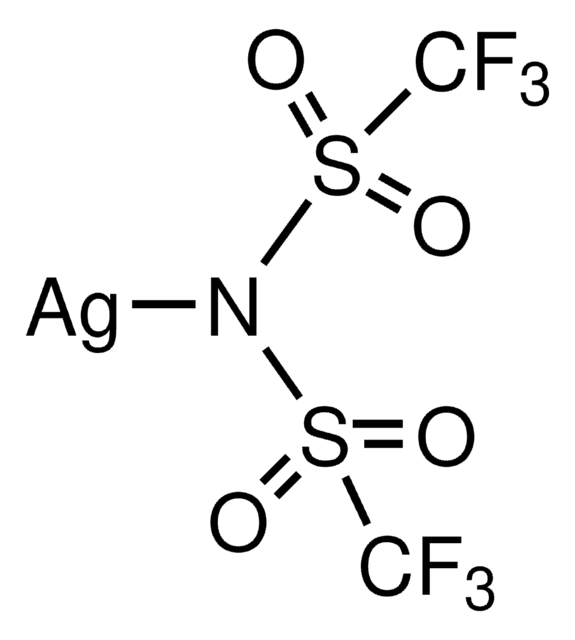906395
EH44
≥99% (HPLC)
Sinonimo/i:
9-(2-Ethylhexyl)-N,N,N,N-tetrakis(4-methoxyphenyl)- 9H-carbazole-2,7-diamine)
About This Item
Prodotti consigliati
Descrizione
Band gap in film: 2.99eV, calculated from UV-vis
Band gap in solution: 3.00eV, calculated from UV-vis
Saggio
≥99% (HPLC)
Forma fisica
powder
Solubilità
insoluble (Methanol and Hexane)
soluble (DMSO, THF, Toluene, o-Xylene, Anisole, Chloroform, Chlorobenzene, and 1,2-Dichlorobenzene)
Energia dell’orbitale
HOMO - 4.85 eV
Stringa SMILE
CCC(CCCC)CN1C2=CC(N(C3=CC=C(OC)C=C3)C4=CC=C(OC)C=C4)=CC=C2C5=CC=C(N(C6=CC=C(OC)C=C6)C7=CC=C(OC)C=C7)C=C15
Descrizione generale
Applicazioni
Using EH44 as HTM in a device configuration of: SnO2/PAL/EH44/MoOx /Al, not only generated high power conversion efficiency (PCE) comparable to the record PCE by using the state-of-the-art-HTM Spiro-OMeTAD, but also most importantly showed greatly improved device stability: even under the combined stresses of light (including ultraviolet light), oxygen and moisture, perovskite solar cells using EH44 as hole transporting layer were shown to retain 94% of their peak efficiency despite 1,000 hours of continuous unencapsulated operation in ambient air conditions (relative humidity of 10-20%). When stability tests were conducted in an inert atmosphere, degradation of only ∼2% over the course of 1,500 hours of continuous operation was observed.
Note that in the above mentioned result, silver bis(trifluoromethanesulfonyl)imide (product 668001) was used to oxidize EH44 and yield EH44+TFSI−.EH44+TFSI− was then blended with neat EH44 at various ratios to control the conductivity (and optical transparency if desired) and optimize the device performance. The impressive power conversion efficiency (PCE) of 18.5% was achieved for a perovskite solar cell using EH44 layers of ∼60 nm thickness doped with 14wt% EH44+TFSI− and 25 mg/ml 4-tert-butylpyridine (product 142379), which is comparable to device performance using spiro-OMeTAD (19%) as the HTM.
Codice della classe di stoccaggio
11 - Combustible Solids
Classe di pericolosità dell'acqua (WGK)
WGK 3
Punto d’infiammabilità (°F)
Not applicable
Punto d’infiammabilità (°C)
Not applicable
Scegli una delle versioni più recenti:
Certificati d'analisi (COA)
Ci dispiace, ma al momento non ci sono COA disponibili online per questo prodotto.
Se ti serve aiuto, non esitare a contattarci Servizio Clienti
Possiedi già questo prodotto?
I documenti relativi ai prodotti acquistati recentemente sono disponibili nell’Archivio dei documenti.
I clienti hanno visto anche
Articoli
Professor Chen (Nankai University, China) and his team explain the strategies behind their recent record-breaking organic solar cells, reaching a power conversion efficiency of 17.3%.
Il team dei nostri ricercatori vanta grande esperienza in tutte le aree della ricerca quali Life Science, scienza dei materiali, sintesi chimica, cromatografia, discipline analitiche, ecc..
Contatta l'Assistenza Tecnica.